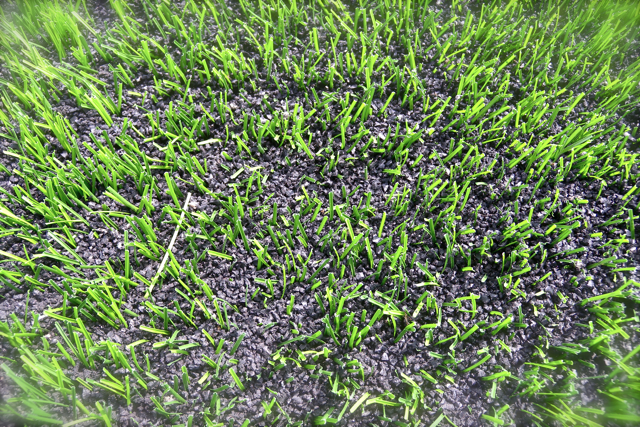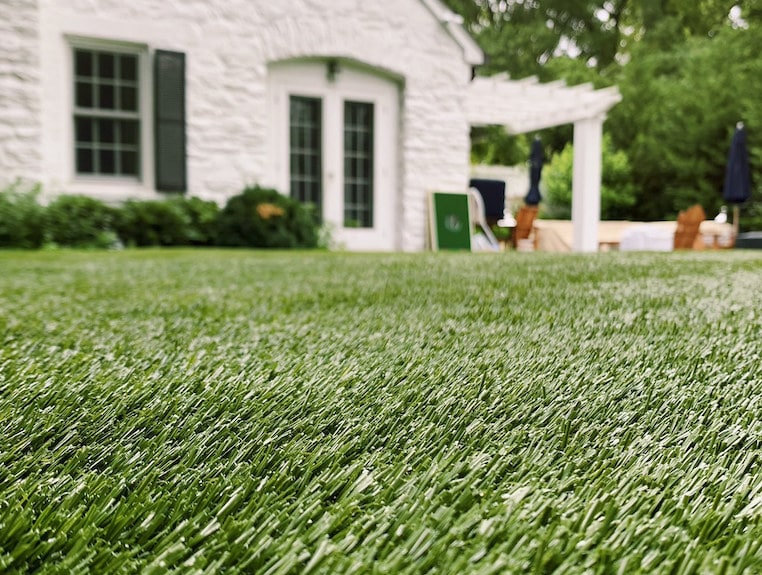Professional Arizona Turf Installation Services for Residential and Commercial Use
Professional Arizona Turf Installation Services for Residential and Commercial Use
Blog Article
Delve Into the Environmental Benefits of Opting for Artificial Turf Solutions
The fostering of synthetic turf remedies presents an engaging opportunity to resolve pushing environmental challenges. By considerably decreasing water use and reducing the application of hazardous chemicals, these alternatives not just promote lasting landscape design but additionally protect regional ecosystems.
Water Preservation Conveniences
One of the most substantial benefits of synthetic lawn is its capacity to conserve water. In comparison, artificial turf does not require watering, significantly decreasing the overall demand for water resources.
By removing the need for normal watering, man-made turf adds to sustainable landscape practices and assists reduce the ecological influence of extreme water consumption. The conservation of water prolongs to the decrease of overflow, which can lead to dirt erosion and waterway contamination.
Additionally, the installation of synthetic grass allows property owners and communities to assign water resources more effectively, concentrating on necessary uses such as alcohol consumption water and agriculture. The change in the direction of synthetic grass not just advertises accountable water usage but additionally lines up with more comprehensive ecological objectives aimed at maintaining natural resources.
As areas progressively focus on sustainability, the water conservation benefits of fabricated lawn offer an engaging situation for its fostering in commercial and residential landscape design projects.
Minimized Chemical Use
The change to synthetic grass dramatically lowers the dependence on chemical treatments frequently made use of in natural turf maintenance. Traditional turf management typically includes the application of herbicides, plant foods, and chemicals to advertise growth and control insects. These chemicals can present dangers to human wellness, local wild animals, and the environment, adding to dirt and water contamination.
In comparison, man-made grass gets rid of the demand for these damaging substances. As soon as set up, it requires marginal upkeep, largely including normal cleansing and occasional infill replenishment. This decrease in chemical use not just benefits the instant atmosphere however also adds to wider eco-friendly stability. By reducing the launch of artificial substances right into the community, man-made turf advertises healthier dirt and water systems.
In addition, the absence of chemical overflow related to synthetic grass installations aids safeguard neighborhood waterways from contamination, sustaining water life and preserving biodiversity. Turf installation phoenix az. As neighborhoods significantly focus on sustainable practices, selecting fabricated lawn offers a sensible remedy that lines up with environmental preservation objectives. With this change, homeowner can appreciate lavish green areas without jeopardizing ecological health, leading the way for a much more lasting future
Reduced Carbon Footprint

Moreover, the installation of synthetic grass can lead to considerable water preservation. All-natural yards call for considerable quantities of water for watering, which not just includes in the carbon impact related to water extraction and therapy but likewise pressures neighborhood water sources. On the other hand, artificial lawn requires marginal upkeep, calling for no watering, thereby dramatically reducing water usage and its associated power expenses.
In addition, the durability of artificial turf adds to its reduced carbon effect. With a lifespan of approximately 15 years or more, the requirement for constant replacements is reduced, resulting in less waste and reduced energy usage in manufacturing and dealing with conventional grass options. On the whole, man-made lawn offers a sustainable choice for eco mindful landscaping.
Environment Preservation
Habitat conservation is a critical factor to consider in the dispute over landscape design options, specifically when contrasting man-made grass to all-natural lawn. All-natural turf lawns frequently call for comprehensive maintenance, including the use of plant foods, chemicals, and herbicides, which can adversely influence neighborhood communities. These chemicals can seep into the soil and rivers, hurting native plants and animals and interrupting neighborhood environments.
Fabricated grass gets rid of the demand for unsafe chemicals, thereby shielding click neighboring wildlife and maintaining the stability of bordering communities. The setup of synthetic lawn can lead to the conversion of former grass locations right into more biodiverse landscapes, such as pollinator yards or indigenous plant areas, Learn More Here which can sustain neighborhood wild animals.
Inevitably, the transition to man-made turf not just conserves water and decreases maintenance initiatives yet additionally fosters a more unified relationship in between human tasks and the all-natural setting, promoting habitat conservation while doing so.
Long-Term Sustainability
Lasting sustainability is a vital element in examining the advantages of synthetic grass over typical lawn yards. One of one of the most considerable benefits of man-made turf is its longevity; it can last up to 15-20 years with very little maintenance, whereas all-natural yard requires constant reseeding and replacement. This durability reduces the need for continuous sources, such as water, fertilizers, and chemicals, which are crucial for keeping a healthy turf lawn.
Furthermore, synthetic grass adds to a decrease in carbon discharges connected with lawn care equipment. Typical grass usually require gas-powered mowers, trimmers, and blowers, all of which add to air pollution. Phoenix turf companies. In comparison, artificial grass removes the requirement for such devices, promoting a cleaner environment
Furthermore, the production of synthetic grass significantly utilizes recycled materials, improving its sustainability profile. As manufacturers take on green methods, the ecological footprint of fabricated turf proceeds to lessen.

Conclusion
The adoption of synthetic grass services provides significant ecological benefits, including substantial water preservation, decreased dependence on hazardous chemicals, and a lower carbon footprint. Furthermore, synthetic grass help in maintaining natural habitats by minimizing land disturbance and promoting long-term sustainability via the usage of durable products. Collectively, these aspects highlight the potential of synthetic grass to contribute favorably to environmental wellness and supply a feasible alternative to typical landscape design techniques in an increasingly resource-conscious world.
In comparison, synthetic grass does not require watering, substantially minimizing the total demand for water resources. By lessening the release of synthetic compounds into the environment, artificial turf promotes much healthier web link dirt and water systems.
Furthermore, the setup of artificial lawn can result in considerable water preservation. In contrast, fabricated lawn requires marginal upkeep, calling for no watering, consequently dramatically reducing water use and its connected power prices.

Report this page